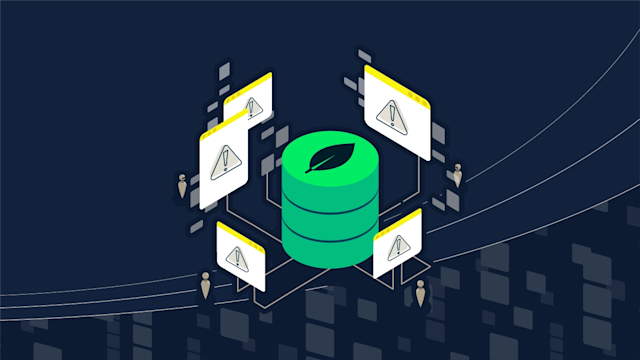Buy now, pay later (BNPL) allows someone to make a purchase and receive it right away, but pay for it over time, usually in four to six installments. BNPL is somewhat similar to layaway, but one significant difference is that although layaway allows shoppers to pay slowly over time, they don’t receive their purchases until all the payments are made. With BNPL, the customer can take home their purchase immediately. BNPL has skyrocketed in popularity during the pandemic as more people shop online. At the same time, however, that growing popularity is prompting more regulatory scrutiny and cybersecurity concerns.
Why BNPI is gaining popularity
Consumers are attracted to BNPL because they often offer lower interest rates than credit cards. For example, while credit card interest rates can range from 18% to 21%, BNPL interest rates can be significantly less. In fact, if you repay the price of what you bought within the delay period, you often won’t pay any interest at all. Some, 39% of consumers report they use BNPL to avoid credit card debt, while 25% use it to borrow without having to agree to a credit check and 16% say they use it because they don’t like credit cards.The growth of BNPL transactions is expected to hit $680 billion worldwide by 2025, and companies offering BNPL predict increasing growth in this area.That growth is fueled by consumer demand and merchants realizing that there are benefits to offering BNPL. Specifically, merchants find that point-of-sale loans are easy to manage. Research shows that consumers make higher average purchases, buy more and have greater brand loyalty when BNPL is offered.To meet rising demand, more companies are jumping into the market. For example, Amazon is partnering with Affirm to split purchases of $50 or more into smaller, monthly installments. In addition, Square (now Block) has acquired Afterpay, and Apple Pay will work with Goldman Sachs to offer BNPL that lets users make interest-free purchases.
BNPL consumer benefits
C+R Research reports that 38% of consumers say they’ll use BNPL to replace their credit cards because they believe that BNPL offers more predictability since credit card balances can accrue until they are paid off, and BNPL offers known installments and penalties. In addition, 45% of BNPL users say they believe it’s easier to make payments under BNPL as compared to credit cards, and 44% report they think BNPL offers more flexibility because users can set up payments in a way that works for them over a specific time period.Younger consumers are often drawn to BNPL because they don’t want to overspend and the installments seem more manageable. Still, research shows that it’s the youngest consumers (those born between the early 1980s and mid-to-late 1990s) that are more likely to miss a BNPL payment.
Regulatory scrutiny
Concerns about consumer debt and how BNPL programs are used have prompted an investigation by the Consumer Financial Protection Bureau (CFPB).The bureau says they’re concerned about people who regularly use BNPL spending more than they anticipated or losing track of scheduled payments. It also says it’s concerned about some BNPL companies not “adequately evaluating what consumer protection laws apply to their products,” such as not making full disclosure of BNPL terms. CFPB also wants to look into how BNPL lenders use data collected on customers to create closed-loop shopping apps with partner merchants to promote specific brands and products that target young users.“Buy now, pay later is the new version of the old layaway plan, but with modern, faster twists where the consumer gets the product immediately but gets the debt immediately too,” says CFPB Director Rohit Chopra. “We have ordered Affirm, Afterpay, Klarna, PayPal, and Zip to submit information so that we can report to the public about industry practices and risks.”
Watch out for hidden fees
Afterpay, for example, is one of the largest BNPL sites and offers consumers the ability to pay in four installments. If payments are made on time, there are no extra charges. However, payments are considered late after ten days and consumers are charged a maximum fee of $8. In addition, Afterpay, Affirm and Klarna partner with retailers like Old Navy, WalMart and Macy’s, and those retail partners may have their own repayment terms and interest rate charges.Consumers typically receive interest-free financing under BNPL from providers, and the providers generate revenue by charging retailers higher fees than what is paid on the BNPL transactions.
The future of BNPL
A quarter of U.S. merchants accept BNPL payments currently, but that is expected to jump to 46% within the coming year.BNPL providers are already working with merchants on cross-promotions. For example, Afterpay will let merchant partners advertise on their app and brands will be able to choose the product they want to promote through listing formats and pay when a shopper engages with the ad.In addition, BNPL is becoming more attractive to restaurants looking for ways to keep customers as restaurant prices rise. Just like in a retail situation, diners pay off a meal in installments, which leads to higher spending by diners. A PYMNTS and Melio collaboration shows that while only 8% of food, entertainment and accommodation businesses currently offer BNPL, 25% say they plan to implement BNPL in the next year.Even credit card companies are entering the field. For example, MasterCard has recently introduced a new product called ‘MasterCard Installments’ that allows users to access BNPL offers through their lender’s mobile banking app or get instant approval at checkout, either online or in-store. Visa’s BNPL option, ‘Visa Installments Solution’, is a collaborative solution with card issuers, acquirers, fintechs and Klarna.Capital One Financial says it plans to launch a BNPL product, and U.S. Bancorp, Goldman Sachs and JP Morgan Chase all say they are testing such a product now or are exploring the idea.
Downsides of BNPL
Along with BNPL’s popularity are some cautionary notes.A recent survey by Qualtrics finds that a third of U.S. consumers who used BNPL fell behind on one or more payments and another study reports that the repayment rate for delinquent BNPL loans that are 30 days late is 30%, compared to 10.5% for credit cards.In addition, more fraudsters are trying to exploit weak areas such as the processes used to obtain BNPL loans. Attackers are taking advantage of weak customer identification and authentication processes, launching bot attacks or implementing account takeovers.
How Aerospike’s Real-time Data Platform helps
It’s evident that more fraud prevention and data on customer defaults will be needed, which is where Aerospike can play a key role in addition to meeting other needs in the exploding BNPL market:
.
Aerospike is able to process the amount of streaming data combined with system-of-record data that fraud prevention machine learning algorithms need, without causing undue burden on the end customer, or the organization’s budgets and staff. Fraud calculations can get completed faster, with up to a 30x reduction in false positives. This can also help reduce identity fraud and account take-overs.
More data, faster.
To spot unusual customer behavior, assess customer risk of default and determine the correct fees or interest rates to charge BNPL customers, Aerospike allows you to merge system-of-record data with external third-party data in real-time to combine with streaming transactional data at the edge. Aerospike can enable sophisticated artificial intelligence and machine learning algorithms at the edge to provide the ability to analyze millions of events, billions of data points and petabytes of information in milliseconds.
Low latency.
Aerospike’s speed at scale allows you to perform faster and deeper AI and ML algorithms to meet your SLA’s to provide a pleasing customer experience.
Ability to scale.
The best way to future-proof your solution is to implement a solution that can scale with you. Aerospike provides the ability to scale from 10s of terabytes up to petabytes and even exabytes without degradation in system performance or overburdened server sprawl.
Real-time fraud detection, the ability to understand your customer’s risk profile to customize terms, including the ability to cost-effectively scale across large data sets is critical to compete and thrive in today’s world. As BNPL continues to grow, companies must be prepared for changing consumer demands, new regulations and above all, new opportunities.Learn more about how Aerospike’s Real-time Data Platform can transform your financial services architecture as well as execute and scale real-time payments faster, with more data, more securely.




